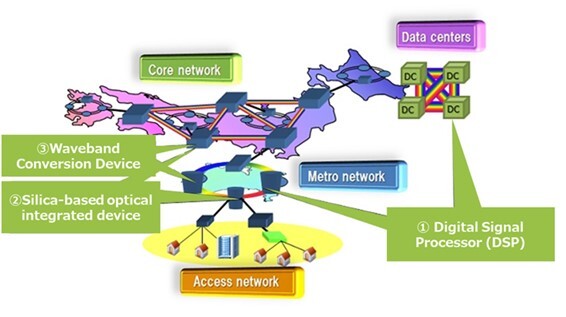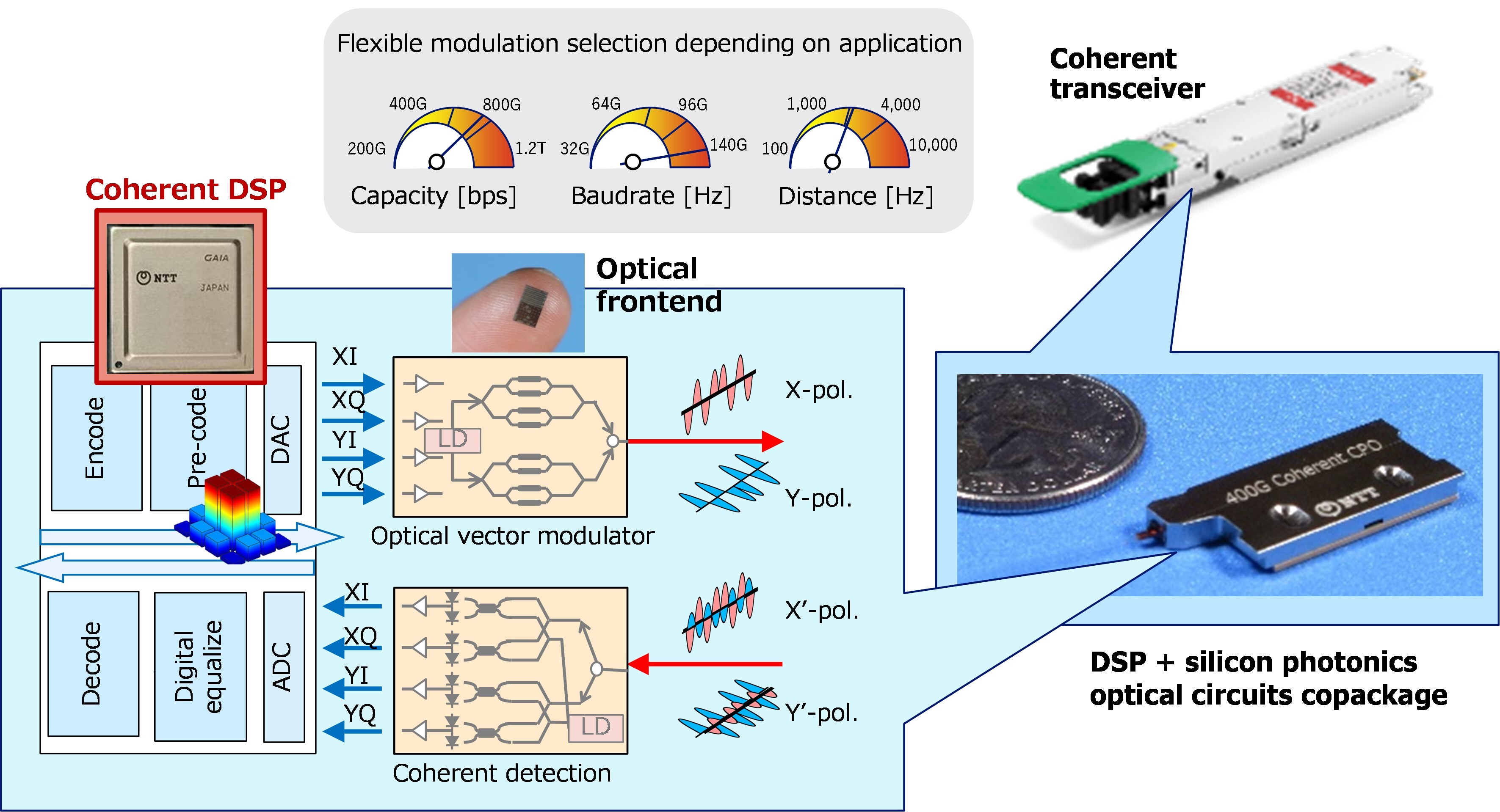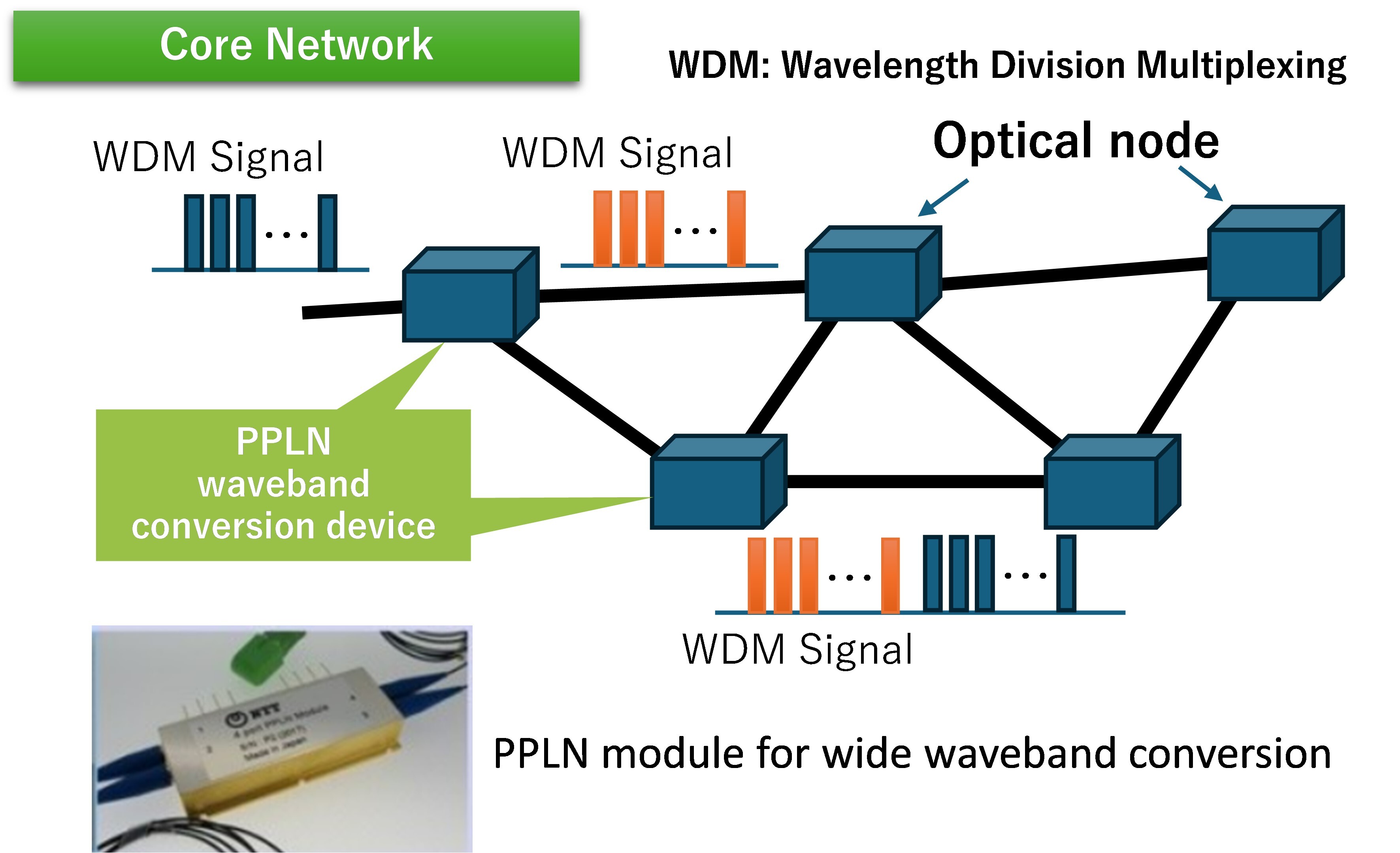Signal Processing Device Project
The Signal Processing Device Project at NTT Laboratories aims to help realize the next generation of optical networks by developing digital coherent devices, optical switching and filtering devices, and waveband conversion devices for use in core/metro/data center interconnect (DCI) networks that support high-speed, large-capacity applications . These developments are introduced below

① Digital signal processors
The exponential growth of information data traffic driven by ML/AI, cloud technologies, and 5G is placing increasing demands for capacity on optical networks. To support the continuous advancements needed to meet these demands, we have developed coherent digital signal processing circuits (coherent DSPs) to enable ultra-high-speed coherent optical transmissions (Figure 1). Coherent DSPs digitize all aspects of light--polarization, amplitude, and phase--and use advanced signal processing to compensate for distortions in optical signals caused by optical fiber transmission lines and optoelectronic devices. They enable a dramatic increase in transmission capacity. To date, we have commercialized high-performance coherent DSPs that provide per-wavelength transmission capacities from 100 Gbit/s to 1.2 Tbit/s over long distances , and we are now developing the next generation that will have a capacity of 1.6 Tbit/s. Data center networks require ultra-low power DSPs for small module integration for high-density implementations. We have already commercialized a low-power version DSP that transmits at up to 400 Gbit/s with a power consumption below 10 W and are developing an 800 Gbit/s version for the next generation. To increase transmission capacity, both higher symbol rates and more advanced modulation levels are necessary. Additionally, it is essential to develop adaptive modulation and demodulation technologies that allow flexible configuration of the transmission capacity, distance, and frequency bandwidth according to the needs of the application. We are researching multi-level modulation technologies that flexibly control polarization, amplitude, and phase; encoding technologies that allow fine-grained setting of the information rate; and digital signal processing technologies that enable these capabilities with low power consumption. On the basis of these innovations, we are developing next-generation coherent DSPs. Furthermore, we have achieved a significant amount of miniaturization by implementing these coherent DSPs in a co-packaged module together with silicon photonics optical circuits (integrating optical-to-electrical conversion functions) and analog electronic circuits such as amplifiers.
② Silica-based optical integrated devices
Wavelength division multiplexing (WDM), which bundles and transmits signals of different wavelengths, is a key technology for increasing the capacity of networks. Wavelength multiplexing/demultiplexing filters that utilize wavelength resources efficiently, optical filters that compensate for the gradual wavelength dependent losses in transmission fiber, and broadband optical switches for automatic control of networks are the essential devices.We are developing optical switching and filtering devices based on NTT's proprietary silica-glass-based optical integrated circuit technology.We aim to realize the next generation of optical networks by utilizing our expertise in silica-based optical integrated circuits.
③ Periodically poled lithium niobate (PPLN) wide waveband conversion devices
We are developing optical signal processing devices that enable wide-waveband conversion, whereby multiple optical signals are simultaneously converted to a different waveband, in next-generation optical networks. As this technology processes optical signals in the optical domain, it can be applied to various forms of optical signal, regardless of the speed or format of the digital coherent signal. This technology can extend the bandwidth available to wavelength-division multiplexing (WDM) by enabling transmitter/receiver devices developed for existing wavebands to be applied to new wavebands to increase the capacity of optical networks. Furthermore, the application of this technology to optical nodes enables the construction of networks that efficiently utilize wavelength resources.


